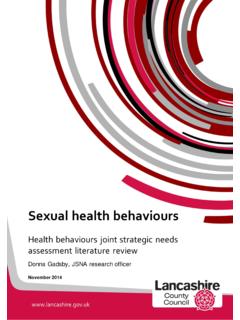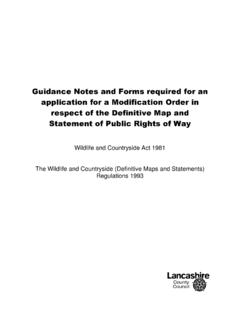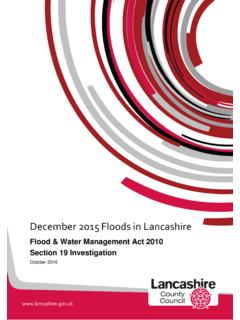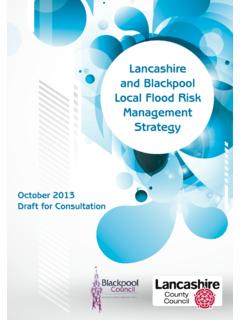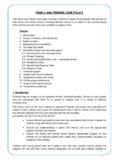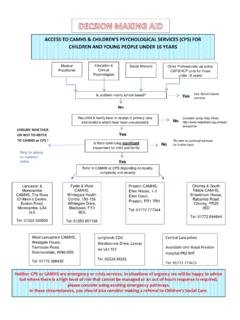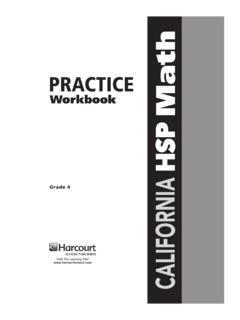Transcription of PIVATS Milestones and the Pre-Key Stage Standards KS2
1 PIVATS Milestones and the Pre-Key Stage Standards Following the government's review of statutory assessment arrangements for pupils in primary schools working below the standard of national curriculum assessments, the following changes have been made for 2018/19 onwards: Pupils engaged in subject-specific study The interim Pre-Key Stage Standards have been extended and must be used for statutory assessment at the end of KS1 and KS2 for pupils working below the standard of national curriculum assessments engaged in subject-specific study. Please note the PIVATS P Scale Milestones are still relevant for ongoing formative assessment and for in-school summative assessments. Pupils not engaged in subject-specific study The government is piloting the approach set out in the Rochford review 's recommendations for assessing pupils not engaged in subject-specific study against the 7 aspects of engagement for cognition and learning.
2 These changes will not take place before the 2019/20 academic year. In the interim, P scales 1-4 must continue to be used for this group of pupils for the 2018/19 academic year. Once the findings have been clarified, the PIVATS team will review the PIVATS P Scale Milestones . (P. 1 Key Stage 1 pupils working below the national curriculum assessment standard Teacher assessment framework 2018/19 Standards and Testing Agency) Regarding the above changes, the PIVATS team have received many enquiries as to whether or not PIVATS continues to be a viable assessment tool. The answer to this is affirmative. In response to concerns regarding the statutory requirements of assessing against the Pre-Key Stage Standards , the PIVATS team have produced the following guidance. However, attention must be drawn to the following points: The Pre-Key Stage Standards focus on certain key aspects of English reading, English writing and mathematics for the specific purpose of statutory end-of-key Stage assessment.
3 Teachers should be confident that pupils have met the standard(s) preceding the one at which they judge them to be working. However, they are not required to have specific evidence for that judgement. A pupil's work which demonstrates a standard is met is sufficient to show that they are working above the preceding Standards . Each subject framework has six Standards of attainment containing 'pupil can' statements upon which teachers will base their judgements. Teachers should follow the specific guidance for each subject. The Standards are not a formative assessment tool: they should not be used to track progress throughout the key Stage or to guide individual programmes of study, classroom practice or methodology. Teachers should assess individual pieces of pupils' work in line with their school's own, more detailed assessment policy and not against these Standards .
4 This is where PIVATS continues to be a viable assessment resource. (P. 2 Key Stage 1/Key Stage 2 pupils working below the national curriculum assessment standard Teacher assessment framework 2018/19 Standards and Testing Agency) With the above in mind, we would like to draw attention to the following: PIVATS is still a relevant assessment tool showing progression in learning which can be used to assess and track progress and inform pupils' individual education plans The guidance given shows that, if pupils are working well within, or have attained, the given milestone , it is likely that they will have, or are capable of, achieving the corresponding Pre-Key Stage standard HOWEVER, the Pre-Key Stage Standards give exact criteria which may not necessarily be mentioned in the PIVATS indicators. It is therefore imperative that teachers ensure they have evidence that pupils have met these criteria in order for the standard to be achieved.
5 Subject Specific Study 2018/19 Pre-Key Stage Standards Guidance re PIVATS Milestones Reading Writing Maths Standard 6 (working at the KS1 expected standard) PIVATS milestone Two Stage 3 Standard 6 (working at KS1 expected standard) Word reading The pupil can: read accurately most words of two or more syllables read most words containing common suffixes* read most common exception words.* In age-appropriate1 books, the pupil can: read most words accurately without overt sounding and blending, and sufficiently fluently to allow them to focus on their understanding rather than on decoding individual words2 sound out most unfamiliar words accurately, without undue hesitation. Language comprehension In a book that they can already read fluently, the pupil can: check it makes sense to them, correcting any inaccurate reading answer questions and make some inferences explain what has happened so far in what they have read.
6 PIVATS milestone Two Stage 3 Standard 6 Composition The pupil can, after discussion with the teacher: write simple, coherent narratives about personal experiences and those of others (real or fictional) write about real events, recording these simply and clearly demarcate most sentences in their writing with capital letters and full stops, and use question marks correctly when required use present and past tense mostly correctly and consistently use co-ordination ( or / and / but) and some subordination ( when / if / that / because) to join clauses. Transcription The pupil can: segment spoken words into phonemes and represent these by graphemes, spelling many of these words correctly and making phonically plausible attempts at others spell many common exception words* form capital letters and digits of the correct size, orientation and relationship to one another and to lower-case letters use spacing between words that reflects the size of the letters PIVATS milestone Two Stage 3 Standard 6 (End of KS1 Standard) The pupil can.
7 Read scales3 in divisions of ones, twos, fives and tens partition any two-digit number into different combinations of tens and ones, explaining their thinking verbally, in pictures or using apparatus add and subtract any 2 two-digit numbers using an efficient strategy, explaining their method verbally, in pictures or using apparatus ( 48 + 35; 72 17) recall all number bonds to and within 10 and use these to reason with and calculate bonds to and within 20, recognising other associated additive relationships ( If 7 + 3 = 10, then 17 + 3 = 20; if 7 3 = 4, then 17 3 = 14; leading to if 14 + 3 = 17, then 3 + 14 = 17, 17 14 = 3 and 17 3 = 14) recall multiplication and division facts for 2, 5 and 10 and use them to solve simple problems, demonstrating an understanding of commutativity as necessary identify 1/4, 1/3, 1/2, 2/4, 3/4, of a number or shape, and know that all parts must be equal parts of the whole use different coins to make the same amount read the time on a clock to the nearest 15 minutes name and describe properties of 2-D and 3-D shapes, including number of sides, vertices , edges , faces and lines of symmetry Standard 5 (working towards the KS1 expected standard) PIVATS milestone One Stage 3 Standard 5 Word reading The pupil can.
8 Read accurately by blending the sounds in words that contain the common graphemes for all 40+ phonemes* read accurately some words of two or more syllables that contain the same grapheme-phoneme correspondences (GPCs)* read many common exception words* In a book closely matched to the GPCs as above, the pupil can: read aloud many words quickly and accurately without overt sounding and blending sound out many unfamiliar words accurately. Language comprehension In a familiar book that is read to them, the pupil can: answer questions in discussion with the teacher and make simple inferences. PIVATS milestone One Stage 3 Standard 5 Composition The pupil can, after discussion with the teacher: write sentences that are sequenced to form a short narrative (real or fictional) demarcate some sentences with capital letters and full stops.
9 Transcription The pupil can: segment spoken words into phonemes and represent these by graphemes, spelling some words correctly and making phonically-plausible attempts at others spell some common exception words* form lower-case letters in the correct direction, starting and finishing in the right place form lower-case letters of the correct size relative to one another in some of their writing use spacing between words. PIVATS milestone One Stage 3 into milestone 2 Standard 5 The pupil can: read and write numbers in numerals up to 100 partition a two-digit number into tens and ones to demonstrate an understanding of place value, though they may use structured resources1 to support them add and subtract two-digit numbers and ones, and two-digit numbers and tens, where no regrouping is required, explaining their method verbally, in pictures or using apparatus ( 23 + 5; 46 + 20; 16 5.)
10 88 30) recall at least four of the six2 number bonds for 10 and reason about associated facts ( 6 + 4 = 10, therefore 4 + 6 = 10 and 10 6 = 4) count in twos, fives and tens from 0 and use this to solve problems know the value of different coins name some common 2-D and 3-D shapes from a group of shapes or from pictures of the shapes and describe some of their properties ( triangles, rectangles, squares, circles, cuboids, cubes, pyramids and spheres). Standard 4 PIVATS milestone One Stage 2 Standard 4 Word reading The pupil can: say sounds for 40+ graphemes, including one grapheme for each of the 40+ phonemes* read accurately by blending the sounds in words with up to five known graphemes read some common exception words* read aloud books that are consistent with their phonic knowledge, without guessing words from pictures or the context of the sentence.

